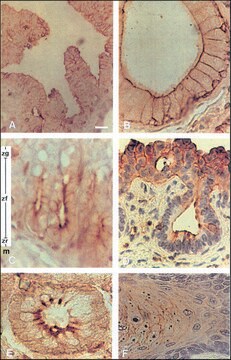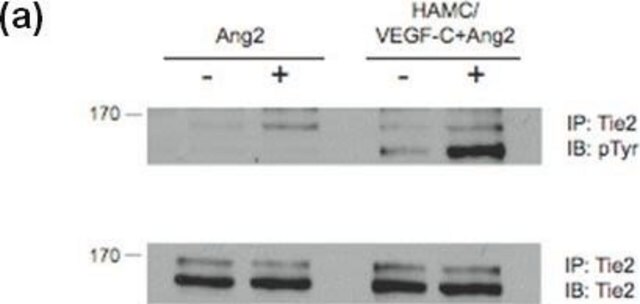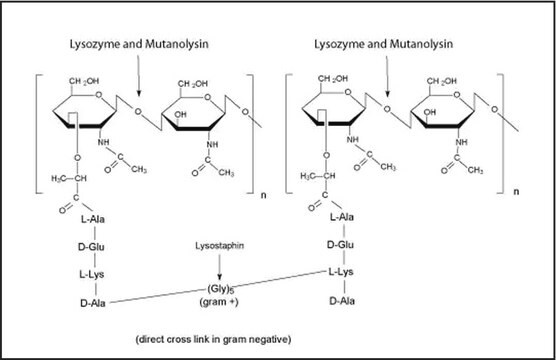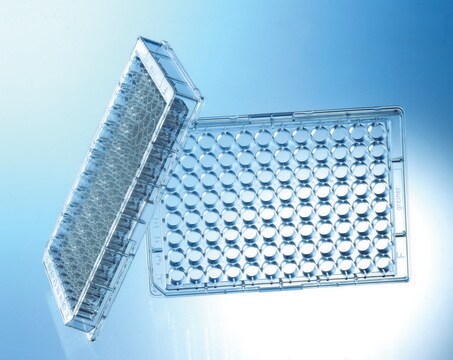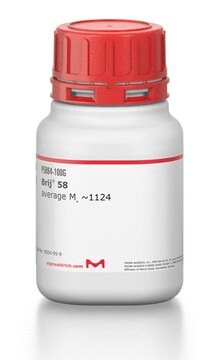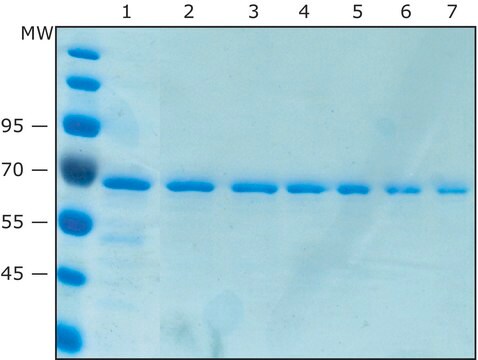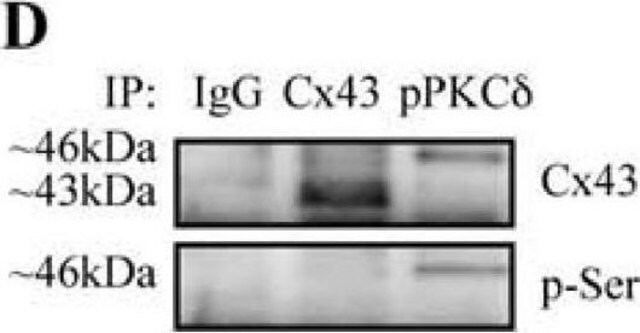A1806
Monoclonal Anti-Phosphotyrosine−Agarose antibody produced in mouse
clone PT-66, purified immunoglobulin, PBS solution
Sinónimos:
Monoclonal Anti-Phosphotyrosine, Phospho-Tyr, Phospho-tyrosine, p-Tyr
About This Item
Productos recomendados
origen biológico
mouse
recombinante
expressed in mouse cell line
conjugado
agarose conjugate
forma del anticuerpo
purified immunoglobulin
tipo de anticuerpo
primary antibodies
clon
PT-66, monoclonal
Formulario
PBS solution
técnicas
immunoprecipitation (IP): suitable
isotipo
IgG1
capacidad
1 mg/mL binding capacity
Condiciones de envío
wet ice
temp. de almacenamiento
2-8°C
modificación del objetivo postraduccional
phosphorylation (pTyr)
¿Está buscando productos similares? Visita Guía de comparación de productos
Categorías relacionadas
Descripción general
Inmunógeno
Aplicación
- immunoprecipitation experiments for affinity-purification of phosphotyrosine proteins
- phosphotyrosine pulldown assays
- PI3-kinase assay
Acciones bioquímicas o fisiológicas
Forma física
Cláusula de descargo de responsabilidad
¿No encuentra el producto adecuado?
Pruebe nuestro Herramienta de selección de productos.
Código de clase de almacenamiento
10 - Combustible liquids
Clase de riesgo para el agua (WGK)
WGK 3
Punto de inflamabilidad (°F)
Not applicable
Punto de inflamabilidad (°C)
Not applicable
Elija entre una de las versiones más recientes:
¿Ya tiene este producto?
Encuentre la documentación para los productos que ha comprado recientemente en la Biblioteca de documentos.
Nuestro equipo de científicos tiene experiencia en todas las áreas de investigación: Ciencias de la vida, Ciencia de los materiales, Síntesis química, Cromatografía, Analítica y muchas otras.
Póngase en contacto con el Servicio técnico